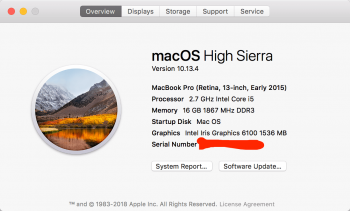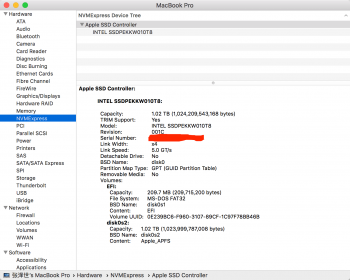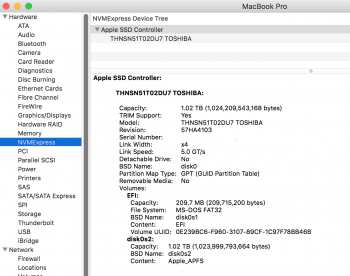So, the correct mod is:
1. Open the MBP114_0182_B00.fd file with uefi tool
2. Search for (command F) text, non unicode, case sensitive the string "NVMe" (without quotes).
3. two finger click the parent "51116915-C348....." item and Extract as is, give it a sensible name (NVMEDXE114.bin for example).
4. Use dosdude1's bootrom extractor to grab the target machines bootrom. This keeps the ME and Serial intact
5. Open it with UEFItool, and repeat the search outlined in step 2
6. Two finger click the parent item "51116915-C348" and choose Replace as is with the DXE driver extracted in step 3
7. Save the modified rom with a suitable file name, when prompted, select yes to open the revised rom file.
8. Repeat the search in step two, and verify the size of the DXE driver to be 25820 bytes. It should open in UEFItool without any errors.
9. AT YOU OWN RISK, burn the modified code to the target macs bootrom with dosdude1's tool.
10 reset power management to defaults if you have made changes with the pmset command. This is achieved by going to Energy Saver Prefpane and selecting "restore defaults" on both the AC and Battery tabs.
It is best practice to take a triple read of the original rom from the macbook using dosdude1's tool and ensure the md5 sums match, to ensure you get a good backup, and keep it somewhere safe.
Please note that my instructions assume you are using the trackpad on the laptop, or an apple magic trackpad which is what I use on my hack. Two finger click = right click

gilles_polysoft has corrected my use of UEFItool in the above instructions, and I have edited this post to reflect that. This procedure works to eliminate the sleep issue on 2013/2014 MBP's. Of course I take no responsibility for your actions, but these steps are simple enough to follow.






